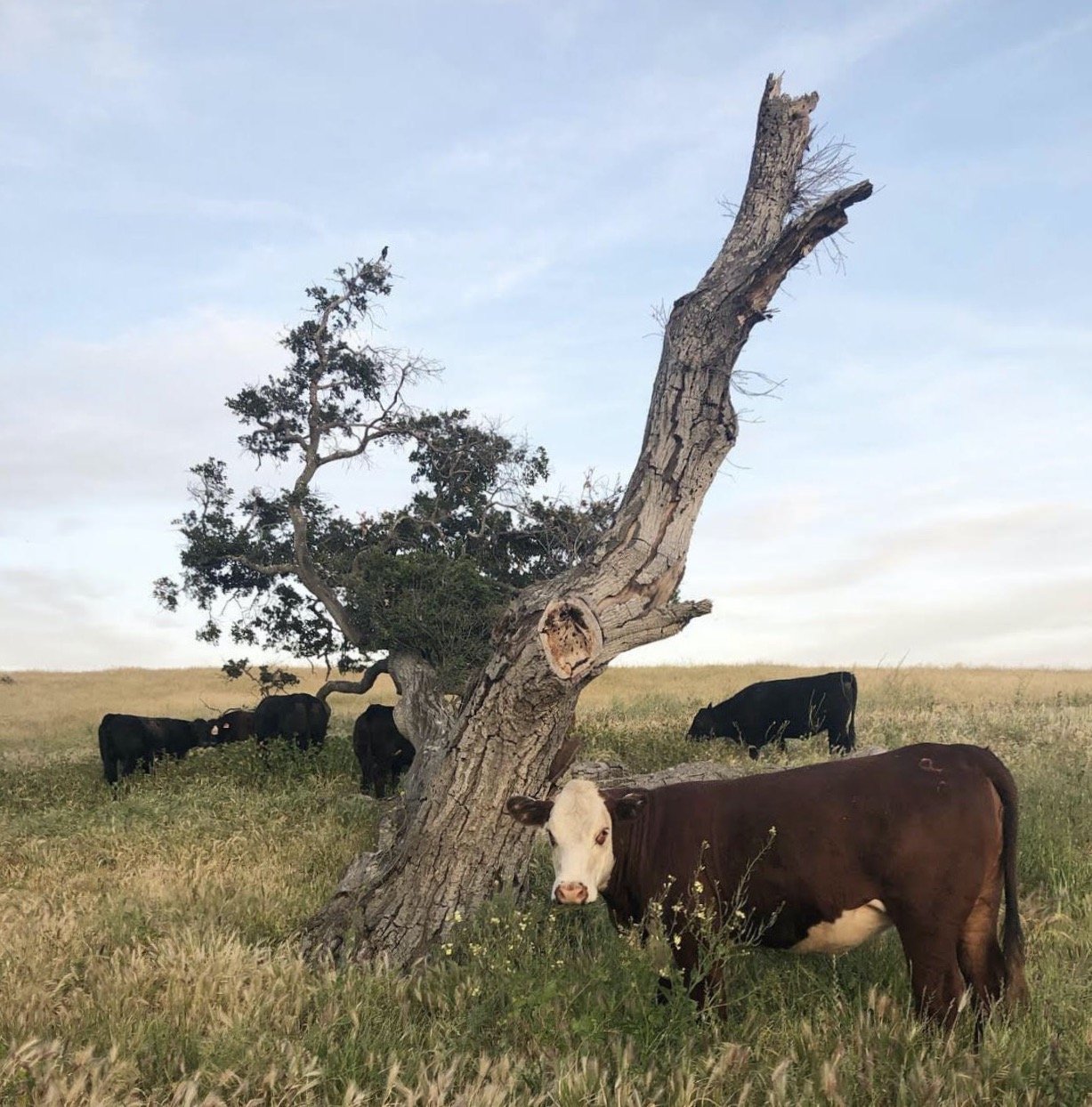I'm driving along the rugged California coast on my way to visit my friend Cynthia. She's a talented writer whose dedication to her craft and enthusiasm for life has again beckoned the Gaviota Writers to come together for a morning of sharing, connection, and rejuvenation.
We are a small but varied group and as we arrive, we'll exchange greetings and mingle. Some will hug and others might be introduced as newcomers, then we'll settle in under the sheltering sprawl of a gnarled oak tree. We'll take turns reading aloud the words we've each crafted into a story, an essay, a memoir or a song, and time will begin to slow. There will be trust, appreciation and acceptance, as we listen closely to stories that are often deeply personal, exposing vulnerable bits of our humanity, reminding us that we're not alone on this conflicted planet.
A moody gray sky is hovering low this morning over a steely sea, and I slowly navigate the twisty road as it dips in and out of small canyons. I veer around potholes and pass a sign that cautions: "Cattle on Road." Thick tendrils of fog reach up the cliffs from the ocean below and drift slowly across the road. I ease through a sharp blind turn, and suddenly I'm upon them.
Three hulking black steers fill my windshield, and the sight of them causes me to inhale and brake sharply. They are plodding deliberately in single file along the edge of the pavement, and they appear identical. Their mud-caked hooves move in unison and their lowered blocky heads swing from side to side, as if choreographed. Steam rises from their hairy hides and disappears into the fog.
I don't stop, yet each detail remains inked into my vision. It's not that I'd come close to hitting them, or even that I'd been unprepared. It's something else . . . it feels like an omen. Three. Not two, not one, but three. In a perfect line, head to tail, as black as obsidian.
I glance repeatedly into my rearview mirror even after they're out of sight, but by the time I turn onto Cynthia's road, I've forgotten them.
Hours later, when the last of our group's written words has been spoken aloud and our gathering has ended, I head for home. I brake at the stop sign where the road T-bones into the 101 Freeway. I focus on my left turn across two lanes of speeding southbound traffic as it approaches from around a bend, then visualize where I will merge into the lanes of speeding northbound traffic.
And now I'm moving north in tandem with cars and big rigs and horse trailers, away from the ocean and through the abrupt dark blink of the Gaviota Tunnel. The freeway climbs over the pass and descends into the valley, between undulating hills of stubborn chapparal and ancient oaks.
I'm driving fast in the slow lane, feeling light and blissful and a little more hopeful about everything in general. It was a delightful morning, the sun has just emerged, and the afternoon seems full of possibilities.
***
In my reverie, gaze fixed on the horizon, I don't register what I see until I've already passed it. A dark shape in the dirt, in the weedy stubble at the very edge of the asphalt. At first, I'm not sure what I've just seen. But now my mind is reconstructing it, and I begin to see an image appearing and sharpening - like my black and white photos emerged many years ago when I swirled them in a bath of chemical developer.
And now I know it was a human being, a man, sitting hunched low to the ground, a grayish-black hoodie pulled down over most of his face. He was motionless, facing the traffic, close enough to feel a slipstream slap from every passing car.
I hurriedly voice-dial 911, but the operator begins to sound bored as soon as I describe the man and his location. He's homeless, she tells me, and they've received calls about him before. I find myself breathlessly repeating to her how dangerously close he's sitting to the edge of the freeway, but she remains unimpressed. She'll send an officer out to check on him, she says.
As I continue my journey home, I can't stop thinking about the man. How did he get out there in the open countryside in the first place? What was his story?
And then I have an unplanned mental segue, and find myself revisiting my African safari from several years ago. My Tanzanian guide Isaac noticed how much time I was spending behind the viewfinder of my fancy new camera. "Just LOOK at the animals," he whispered to me. "Don't take so many pictures! Use your eyes!"
When I took his advice, a large family of elephants materialized before me there in the shade of a monstrous baobab tree. I could hear them, smell them, and see their trunks swinging, ears fanning, mothers nurturing their fragile babies. They were wild and free. I was witnessing a scene as timeless as Africa itself, and I wept from the intensity of emotion that swept over me like a tsunami.
As Mary Oliver wrote: "Pay attention. Be astonished. Tell about it."
That man beside the freeway. What was he looking at? Did his view of the world ever give him joy or cause him to catch his breath in amazement? Could he tell someone about it? Would anyone ever listen?
And then I inexplicably find myself remembering those three black steers, focusing on the path directly ahead of them, lumbering into a future they could never anticipate.
